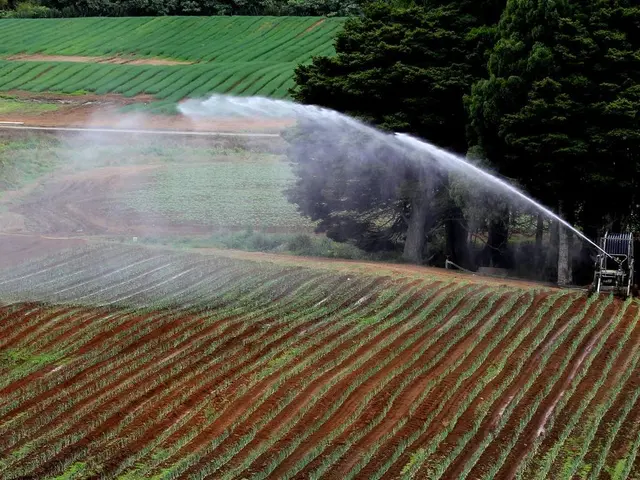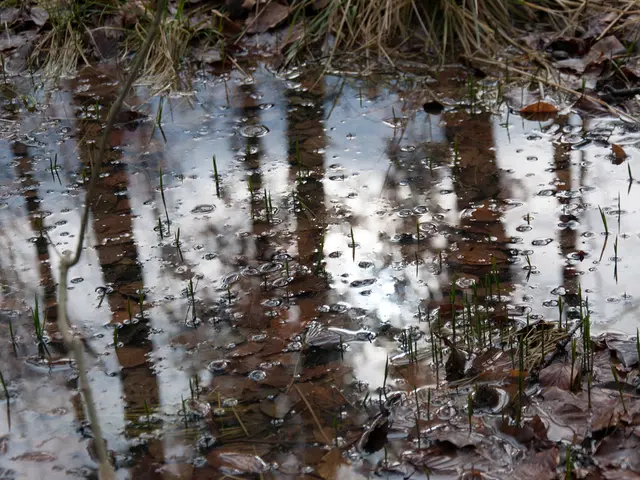Fungi that Cause Deadly Outbreaks to Expand with Rising Temperatures
Global Surge in Deadly Aspergillus Fungus, Coupled with Climate Change
Warning Sign:TheFuncusAspergillus (AF) family, notorious for causing millions of deaths each year, is set to expand its territories, primarily in Europe, Asia, and the Americas due to escalating temperatures and climate change. This grim prediction has been detailed in recent research on the destructive impact of global warming on health threats.
The Menacing Mold:Climate change has been identified as a key factor in the geographical expansion of harmful pathogens, including those transmitted by mosquitoes. Molds, however, represent a more formidable challenge, given the difficulty of detecting their microscopic spores, the scarcity of effective treatments for the diseases they trigger, and the growing resistance to existing medications.
Tip of the Iceberg:The world is inching ever closer to a "tipping point" in the widespread proliferation of fungal pathogens. Norman van Rhijn, co-author of the aforementioned AF research, warns that we stand to lose hundreds of thousands of lives and witness radical shifts in species distributions as a result of climate change.
Unseen Enemy:The new post-apocalyptic television series The Last of Us may have brought the looming fungal threat to the attention of a broader audience, but awareness regarding the danger in the real world remains starkly underestimated. Mycology, the study of fungi, remains a largely untapped and poorly understood field, with over 90% of fungal species remaining unknown to science[4].
A Yearly Killer:According to recent research, approximately 3.8 million people succumb to invasive fungal infections annually. These infections serve as the principal cause of death in 2.5 million cases[3]. One of the leading dangers is aspergillosis, a lung disease caused by AF spores that can spread to other organs, including the brain. Many infections remain undetected, often because medical practitioners are unfamiliar with the symptoms or mistakenly attribute them to other conditions.
A Double-Edged Sword:AF, named in the 18th century for its resemblance to a holy-water sprinkler, has brought both blessings and peril to humanity. Some species contribute to industrial chemistry, the fermentation of soy sauce and sake, among other industrial practices. However, others pose a significant risk to human health, with high mortality rates when infections take hold, particularly in individuals with weakened immune systems or conditions such as asthma or cystic fibrosis.
At the Frontline of the Crisis:The species Aspergillus fumigatus has been identified as one of four critical fungal pathogens with the highest risk[2]. The latest fungal research, funded by Wellcome and released this weekend, suggests that A. fumigatus could colonize an additional 77% of territory by 2100 if the world continues to rely heavily on fossil fuels. This expansion would expose an additional 9 million people in Europe to infection.
Adapting to an Unfamiliar Territory:Professor Elaine Bignell, co-director at the MRC Centre for Medical Mycology at Exeter University, notes that while A. fumigatus can grow rapidly in high temperatures in its natural environment, it may have adapted to thrive in human bodies as well, due to similar temperatures. Another species examined in the study, Aspergillus flavus, could spread into an additional 16% of territory by 2100, potentially causing new or larger issues in north China, Russia, Scandinavia, and Alaska.
A Mixed Blessing:The predicted spread of A. flavus raises concerns, as the species contributes to cancers and liver damage through the production of aflatoxins. Increased temperatures and CO2 levels can boost the production of these toxins and contaminate crops. Moreover, recent data indicate that A. flavus may develop high resistance to fungicides.
Financial Challenges:The development of antifungal medications has been hindered by the unattractiveness of investing in this sector, owing to high costs and doubts over their profitability. As a result, researchers and healthcare professionals must work diligently to find new solutions and improve the diagnostics and treatments for these insidious fungal infections.
Climate Change and Respiratory Diseases:Researchers at UC Berkeley are using big data to analyze medical records from 100 million patients in the US, with the aim of identifying factors affecting the incidence and severity of fungal infections. Initial findings suggest that fungal pathogens like Coccidioides, responsible for the potentially severe respiratory disease Valley fever, spread more widely after drought and climate-related changes[4].
Populations at Risk:Since 2020, data suggests the highest increases in aspergillosis have occurred in Latino individuals and people living in rural areas. While the specific reasons are unclear, potential factors may include individuals with severe Covid-19 who are unable to access treatment during periods of overwhelmed healthcare systems. As climate change continues to drive waves of respiratory illnesses, secondary fungal infections like aspergillosis will likely persist as a significant public health concern, particularly for those already facing structural disadvantages and increased environmental risks.
Sources:1. https://www.nature.com/articles/s41586-020-3255-62. https://www.who.int/news-room/fact-sheets/detail/antifungal-resistance3. https://academic.oup.com/cid/article/69/10/1465/62470514. https://www.kew.org/perspectives/90-per-cent-of-fungal-species-remain-unknown-to-science
Expanding Medical-Conditions: The report on the impact of global warming on health threats underscores the growing concern that climate change could lead to an increase in fatal medical conditions related to fungal infections, such as aspergillosis.
Environmental-Science Connection: The study on the spread of Aspergillus fumigatus shows how environmental science and climate change play a significant role in the geographical expansion of harmful pathogens, further highlighting the intricate relationship between health-and-wellness and our environment.








